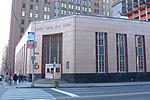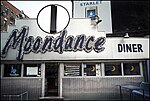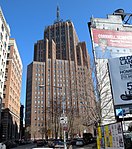The Leslie-Lohman Museum of Art (LLM), formerly the Leslie-Lohman Museum of Gay and Lesbian Art, is a visual art museum in SoHo, Lower Manhattan, New York City. It mainly collects, preserves and exhibits visual arts created by LGBTQ artists or art about LGBTQ+ themes, issues, and people. The Museum, operated by the Leslie-Lohman Gay Art Foundation, offers exhibitions year-round in numerous locations and owns more than 22,000 objects, including, paintings, drawings, photography, prints and sculpture. It has been recognized as one of the oldest arts groups engaged in the collection and preservation of gay art. The Foundation was awarded Museum status by the New York State Board of Regents in 2011 and was formally accredited as a museum in 2016. The Museum is a member of the American Alliance of Museums and operates pursuant to their guidelines. As of 2019, the LLM was the only museum in the world dedicated to artwork documenting the LGBTQ experience.The Museum maintains a Permanent Collection into which more than 1,300 objects have been accessioned. The Permanent Collection contains works by a number of well-known gay artists such as Berenice Abbott, Abel Azcona, David Hockney, Ingo Swann, Catherine Opie, Andy Warhol, Tom of Finland, Delmas Howe, Jean Cocteau, David Wojnarowicz, Robert Mapplethorpe, George Platt Lynes, Horst, Duncan Grant, James Bidgood, Duane Michals, Charles Demuth, Don Bachardy, Attila Richard Lukacs, Jim French, Del LaGrace Volcano, Paul Thek, Peter Hujar, Arthur Tress and many others.









